Abstract
In view of the well known sensitivity of the seminiferous epithelium to various stress factors and to chemicals one would expect that semen analyses would be part of many screening programs to detect dangerous chemicals and environmental hazards. This is not the case, and our knowledge about the production and functional properties of human spermatozoa is mainly based on analyses of specimens from men with barren marriages. A more common use of semen analyses should enable us to better define the normal limits for many of the potentially relevant variables. Due consideration must, however, also be given the time for spermatogenesis and for transit through the epididymis as well as the influence of seminal plasma factors on many functional properties of the spermatozoa. From the scanty information available one can already now presume that careful analyses of motility and morphology of the spermatozoa under standardized conditions will be of help in the early detection of environmental hazards. A more common use of methods for the assessment of such functional properties of the spermatozoa as structural stability, membrane permeability, metabolism, and resistance to physical stress will give additional information about the effects of chemicals and other factors. To exploit these potential methods for the early detection of environmental hazards there is, however, also a need of a changed attitude towards semen analysis from the medical profession as well as from the public.
Full text
PDF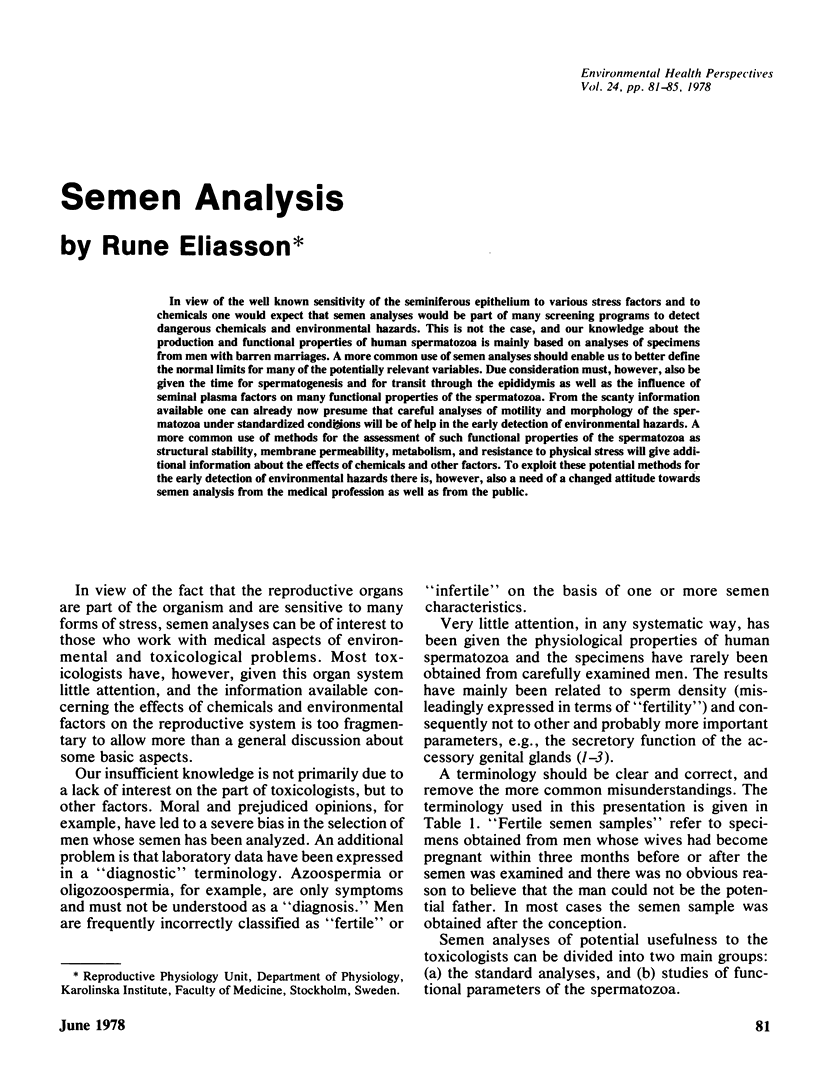
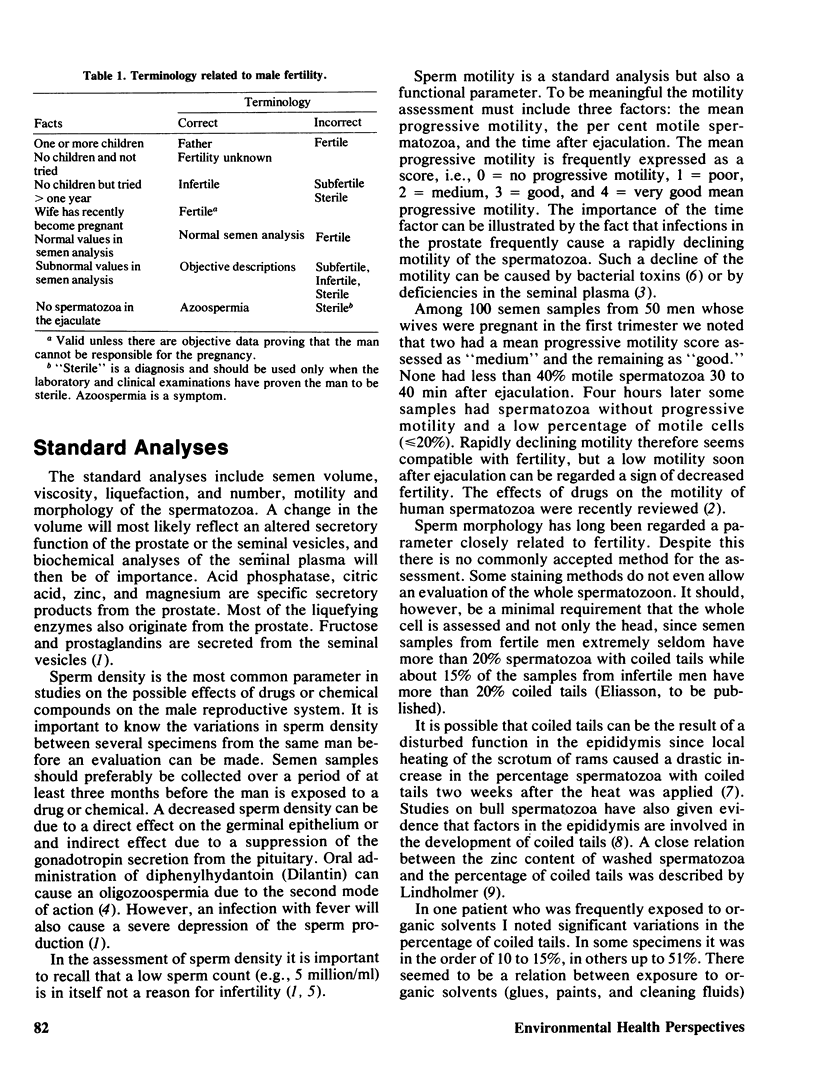
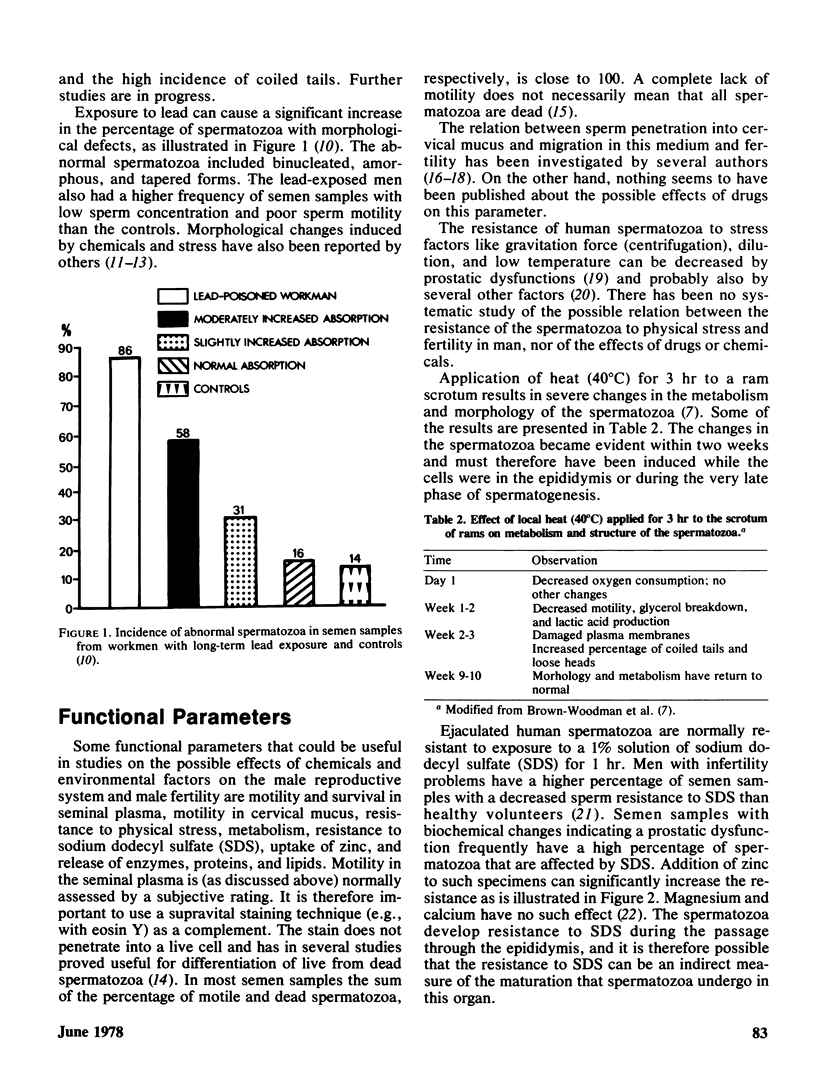
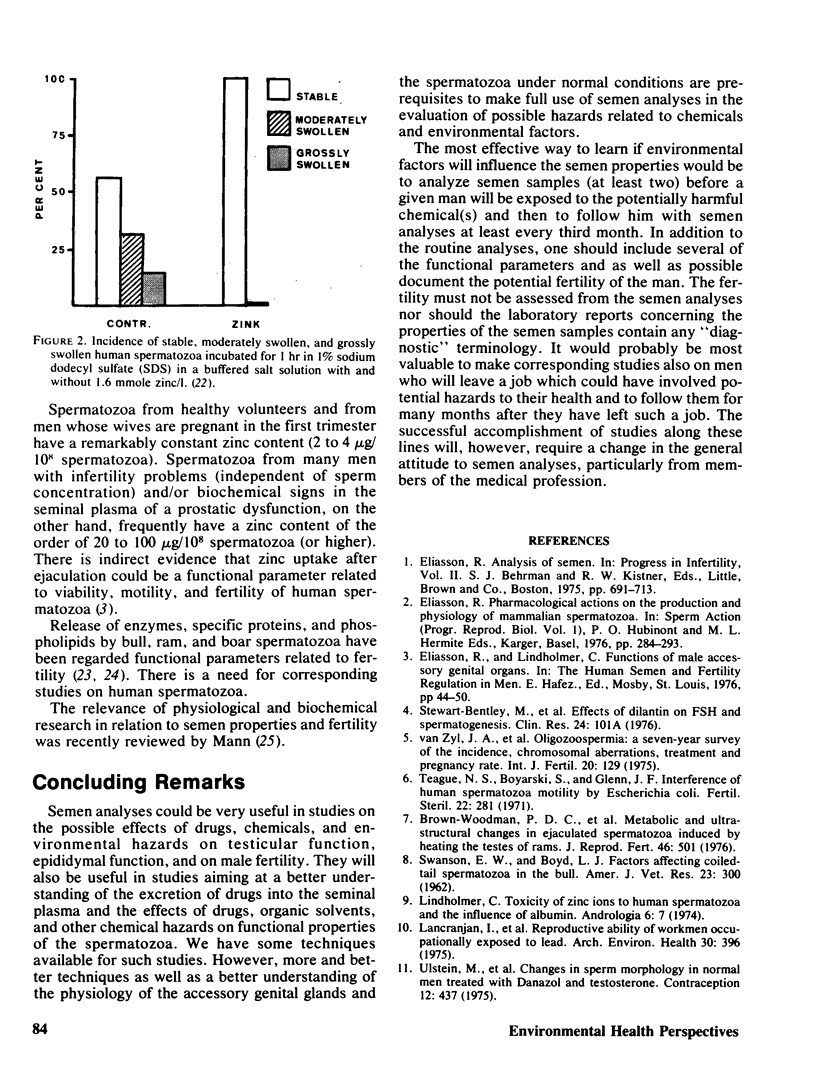
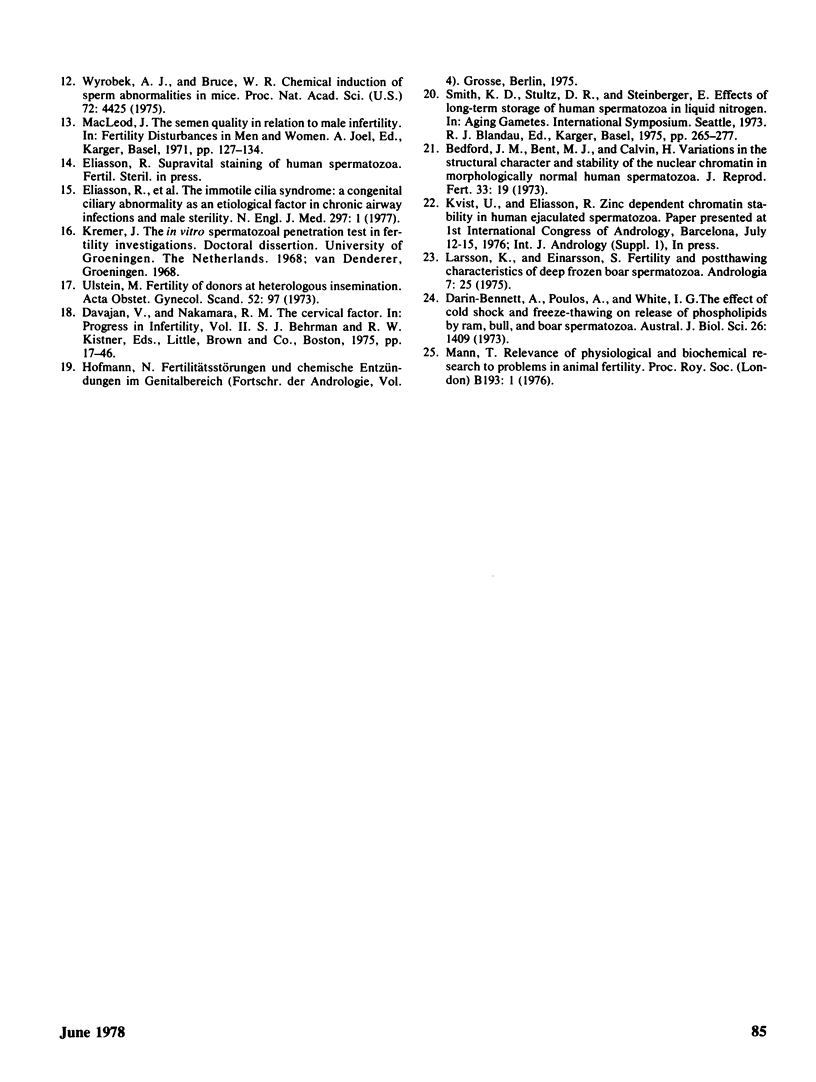
Selected References
These references are in PubMed. This may not be the complete list of references from this article.
- Bedford J. M., Bent M. J., Calvin H. Variations in the structural character and stability of the nuclear chromatin in morphologically normal human spermatozoa. J Reprod Fertil. 1973 Apr;33(1):19–29. doi: 10.1530/jrf.0.0330019. [DOI] [PubMed] [Google Scholar]
- Brown-Woodman P. D., Mohri H., Darin-Bennet A., Shorey C. D., White I. G. Proceedings: Metabolic and ultrastructural changes in ejaculated spermatozoa induced by heating the testes of rams. J Reprod Fertil. 1976 Mar;46(2):501–502. doi: 10.1530/jrf.0.0460501. [DOI] [PubMed] [Google Scholar]
- Darin-Bennett A., Poulos A., White I. G. The effect of cold shock and freeze-thawing on release of phosphiolipids by ram, bull, and boar spermatozoa. Aust J Biol Sci. 1973 Dec;26(6):1409–1420. doi: 10.1071/bi9731409. [DOI] [PubMed] [Google Scholar]
- Eliasson R., Mossberg B., Camner P., Afzelius B. A. The immotile-cilia syndrome. A congenital ciliary abnormality as an etiologic factor in chronic airway infections and male sterility. N Engl J Med. 1977 Jul 7;297(1):1–6. doi: 10.1056/NEJM197707072970101. [DOI] [PubMed] [Google Scholar]
- Lindholmer C. Toxicity of zinc ions to human spermatozoa and the influence of albumin. Andrologia. 1974;6(1):7–16. doi: 10.1111/j.1439-0272.1974.tb01583.x. [DOI] [PubMed] [Google Scholar]
- Mann T. Relevance of physiological and biochemical research to problems in animal fertility. Proc R Soc Lond B Biol Sci. 1976 Mar 30;193(1110):1–15. doi: 10.1098/rspb.1976.0027. [DOI] [PubMed] [Google Scholar]
- SWANSON E. W., BOYD L. J. Factors affecting coiled-tail spermatozoa in the bull. Am J Vet Res. 1962 Mar;23:300–309. [PubMed] [Google Scholar]
- Teague N. S., Boyarsky S., Glenn J. F. Interference of human spermatozoa motility by Escherichia coli. Fertil Steril. 1971 May;22(5):281–285. doi: 10.1016/s0015-0282(16)38220-6. [DOI] [PubMed] [Google Scholar]
- Ulstein M. Fertility of donors at heterologous insemination. Acta Obstet Gynecol Scand. 1973;52(2):97–101. doi: 10.3109/00016347309158296. [DOI] [PubMed] [Google Scholar]
- Ulstein M., Netto N., Leonard J., Paulsen C. A. Changes in sperm morphology in normal men treated with danazol and testosterone. Contraception. 1975 Oct;12(4):437–444. doi: 10.1016/0010-7824(75)90079-7. [DOI] [PubMed] [Google Scholar]
- Wyrobek A. J., Bruce W. R. Chemical induction of sperm abnormalities in mice. Proc Natl Acad Sci U S A. 1975 Nov;72(11):4425–4429. doi: 10.1073/pnas.72.11.4425. [DOI] [PMC free article] [PubMed] [Google Scholar]
- van Zyl J. A., Menkveld R., van Kotze T. J., Retief A. E., van Niekerk W. A. Oligozoospermia: a seven-year survey of the incidence, chromosomal aberrations, treatment and pregnancy rate. Int J Fertil. 1975;20(3):129–132. [PubMed] [Google Scholar]


